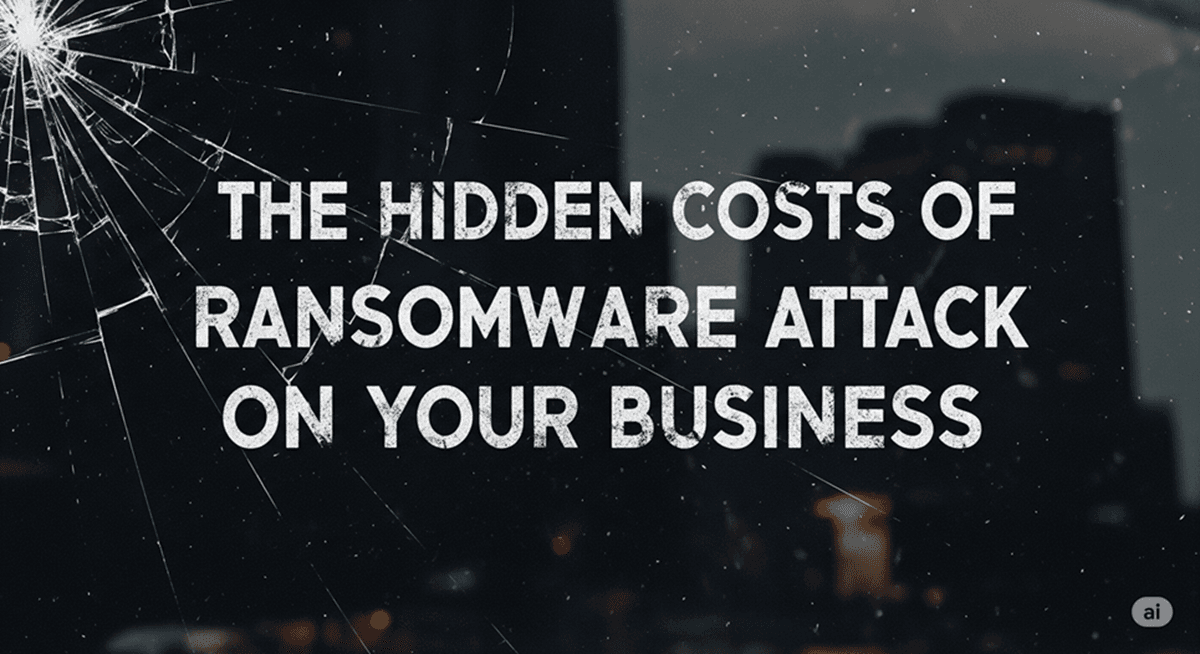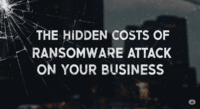In the heat of a ransomware attack, businesses often face a single agonising question: should we pay the ransom? But the ransom demand is just the tip of the iceberg. From prolonged downtime and lost data to regulatory fines and reputation damage, the hidden costs of ransomware can cripple an organisation long after the encryption keys are handed over.
This article uncovers the full financial and operational impact of ransomware attacks on modern businesses—especially the costs most leaders don’t see coming.
“The true cost of ransomware isn’t the ransom—it’s the aftermath.”
1. Operational Downtime
Ransomware grinds operations to a halt. Systems are locked, services are interrupted, and business functions—from sales and customer service to finance and logistics—become inaccessible. For critical infrastructure organisations, this can mean real-world disruptions, such as fuel shortages, delayed medical care, or supply chain paralysis.
Example: The Colonial Pipeline attack in 2021 disrupted nearly half of the fuel supply on the U.S. East Coast, triggering fuel shortages and panic buying. Though they paid the ransom, it still took days to restore normal service.
Hidden Cost: According to Coveware, the average downtime caused by ransomware is 21 days. This downtime often costs more than the ransom itself due to lost productivity, missed opportunities, and reputational harm.
2. Data Loss and Integrity Compromise
Recovering encrypted files doesn’t mean the data is intact or even useful. Ransomware actors may corrupt files during encryption or exfiltrate sensitive data before locking it down.
Example: In double-extortion schemes like those used by the Maze and LockBit groups, attackers first steal sensitive data before deploying encryption. Even if a ransom is paid, leaked data can resurface on dark web forums, leading to further legal and reputational consequences (ENISA Threat Landscape).
Hidden Cost: Beyond stolen IP or client records, corrupted databases and manipulated data can undermine the integrity of financial records, operational workflows, or compliance audits. Forensic experts may be required to verify what can be trusted again.
Best Practice: Maintain secure, air-gapped backups and regularly test your recovery processes.
3. Recovery and Remediation Costs
Cleaning up after a ransomware attack is like rebuilding your house after a fire. Everything—from servers to endpoints—must be checked, cleaned, or rebuilt.
Activities include:
- System reimaging and software reinstalls
- Threat hunting for persistence mechanisms
- Endpoint Detection and Response (EDR) configuration
- Third-party audits and legal investigations
Case Study: Shipping giant Maersk was hit by NotPetya, a wiper masquerading as ransomware. It cost them over $300 million to recover, even though they didn’t pay a ransom. Their global IT infrastructure had to be rebuilt from the ground up.
Hidden Cost: Many costs are indirect: overtime for IT teams, lost innovation time, temporary hires, and diverted business resources.
4. Regulatory Fines and Legal Exposure
Ransomware attacks often involve a data breach component, triggering legal obligations under data protection laws. Regulatory scrutiny can come swiftly—and it’s not limited to large enterprises.
Laws That May Apply:
- General Data Protection Regulation (GDPR)
- Health Insurance Portability and Accountability Act (HIPAA)
- India’s Digital Personal Data Protection (DPDP) Bill
- California Consumer Privacy Act (CCPA)
Example: Under GDPR, organisations must report data breaches within 72 hours. Failing to do so could lead to fines of up to €20 million or 4% of global revenue—whichever is higher.
Hidden Cost: Legal counsel fees, settlements, notification costs, and investigations can spiral rapidly.
Best Practice: Ensure you have an incident response policy that includes legal, regulatory, and communications workflows.
5. Reputation Damage and Loss of Trust
Rebuilding customer trust can take years, especially if sensitive data is leaked. Even the perception of incompetence can push customers to competitors.
Example: When foreign exchange company Travelex suffered a ransomware attack, they were offline for weeks. The incident led to massive customer churn, a downgraded credit rating, and eventual collapse.
Hidden Cost: Poor reviews, social media backlash, and loss of partner confidence can inflict long-term brand harm.
Tip: Proactively communicate with stakeholders and be transparent about remediation steps.
6. Cyber Insurance Premium Spikes
Cyber insurance was once a financial cushion—but following increased claims, insurers have tightened conditions and raised premiums significantly.
Example: A report by Marsh McLennan notes that cyber insurance premiums increased over 100% year-over-year in some sectors following repeat ransomware claims.
Hidden Cost: Premiums can increase by 200–300% after an incident, especially if the business didn’t meet policy requirements such as MFA implementation or regular patching.
Best Practice: Treat cyber insurance as a risk transfer tool, not a substitute for strong defences. Work closely with your broker to ensure your environment meets coverage standards.
7. Long-Term Security Investments Post-Attack
A ransomware attack often prompts an urgent and costly reassessment of security maturity. CISOs and boards may be pressured to make large, unbudgeted purchases to prevent recurrence.
Common Post-Breach Investments:
- Upgrading endpoint protection and EDR platforms
- Deploying SIEM and SOAR tools
- Implementing Zero Trust architectures
- Conducting red team exercises and pen testing
- Expanding security awareness training
Hidden Cost: These investments, while necessary, can cannibalise budgets from innovation or expansion plans.
Best Practice: Use a ransomware incident as a catalyst for cultural change—embed security into the fabric of the organisation.
The Real Cost of Ransomware
Paying the ransom is never the end—it’s only the beginning of your financial and reputational reckoning. The hidden costs of ransomware attacks reach deep into every department, from IT and legal to marketing and finance.
The best defence? Preparedness. Regular risk assessments, employee training, strong backups, and incident response planning are your best insurance.
Remember: Ransomware is a business continuity issue—not just a technical one.
Frequently Asked Questions (FAQs)
Q1. Is paying the ransom the fastest way to recover from a ransomware attack?
Not necessarily. While paying may unlock files quickly, it doesn’t guarantee complete recovery or prevent future attacks. In many cases, decryptors fail or leave residual malware behind.
Q2. What are the most overlooked costs of a ransomware attack?
Beyond the ransom, organisations often overlook downtime, reputational damage, legal fees, compliance fines, and future insurance cost hikes.
Q3. Can cyber insurance fully cover ransomware-related losses?
Cyber insurance may cover some expenses, but exclusions and coverage limits vary widely. Many policies do not cover reputational harm or long-term business disruption.
Q4. How long does it take to fully recover from a ransomware attack?
While basic services may be restored in days or weeks, full recovery (including rebuilding systems, regaining trust, and meeting regulatory obligations) can take months or even years.
Q5. What should businesses do to prepare for ransomware threats?
Invest in regular backups, user awareness training, endpoint protection, incident response plans, and vulnerability assessments. A layered security strategy is critical to prevention.
Q6. What legal obligations might arise after a ransomware incident?
You may be required to report the incident to regulatory authorities, notify affected customers, and face litigation if data was leaked or mishandled—depending on regional laws like GDPR, HIPAA, or the DPDP Bill in India.
Q7. Should small businesses be worried about ransomware, or is it just a large enterprise threat?
Small businesses are increasingly targeted due to weaker defences and limited resources. According to the Verizon DBIR, over 60% of ransomware victims are small to mid-sized enterprises.
















Leave a comment